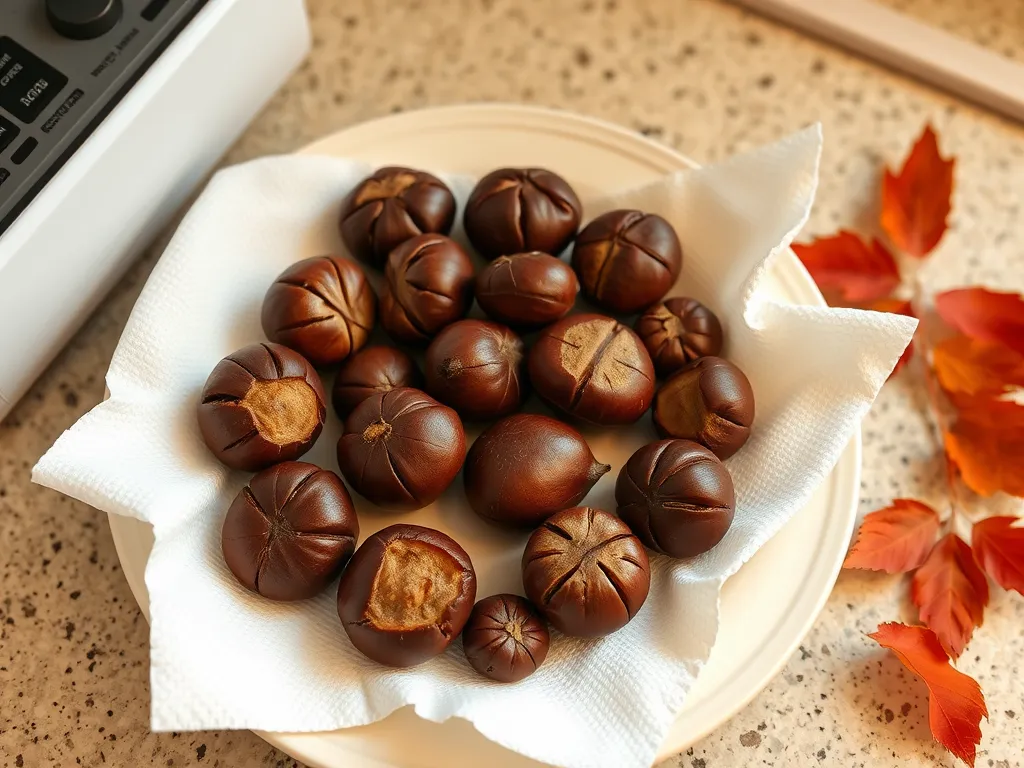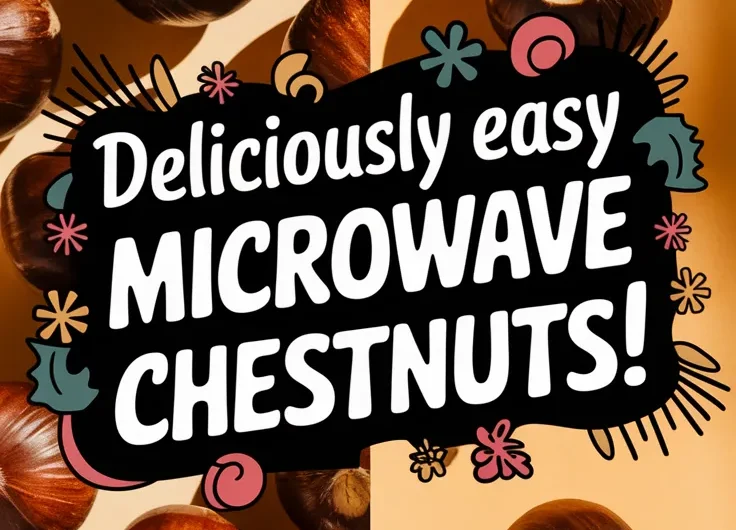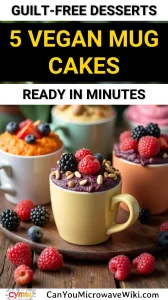Craving warm, buttery chestnuts but dreading the oven? We’ve got your back—microwaving chestnuts takes under 10 minutes from start to snack. No campfire, no messy cleanup, no patience required.
No open flames, no fuss—just quick, sweet, and earthy goodness ready to devour. Bonus: your kitchen stays cool enough to handle a mid-cooking dance party. (We won’t judge.)
We’ll show you exactly how to avoid chestnut catastrophes (steam explosions, anyone?) while nailing that perfect tender-but-not-mushy texture. Let’s crack into it—literally.
Jump To:
How to Cook Chestnuts in the Microwave
Recipe by Lisa MartinCourse: SnackCuisine: American, Italian2
5
minutes10
minutes160
kcal17
minutesMicrowaving chestnuts is an efficient way to prepare this delectable treat without the lengthy roasting process. With just a few minutes in the microwave, you can enjoy tender and flavorful chestnuts that are great for snacking or adding to dishes. This recipe will guide you through the steps to ensure your chestnuts are perfectly cooked every time.
Ingredients
of chestnuts
salt optional
a microwave-safe bowl or dish.
Directions
- Start by washing the chestnuts thoroughly to remove any dirt, Next, using a sharp knife, make a deep ‘X’ shape incision across the rounded side of each chestnut, Place the chestnuts in a microwave-safe bowl or dish, Add about an inch of water to the bowl, Cover the bowl with a microwave-safe lid or plate, Microwave on high for 5 minutes, Check the chestnuts for doneness; they should be tender and the shell should start to peel back, If necessary, microwave in additional 1-minute increments until cooked, Carefully remove the bowl from the microwave and let it sit for 2 minutes to cool down slightly, Once cool enough to handle, peel the outer shell and the inner skin off the chestnuts before serving..
Notes
- For best results, use fresh, high-quality chestnuts. Ensure the cuts are deep enough to prevent them from bursting during cooking. You may add a sprinkle of sea salt for extra flavor, and serve warm for the best taste experience. This method is a quick alternative if you're short on time but still want to enjoy the rich flavors of roasted chestnuts.
What Do Chestnuts Taste Like?
Chestnuts have a sweet, earthy flavor that’s less crunchy than almonds and creamier than walnuts. Imagine baked sweet potato meets hazelnut—that’s the cozy vibe we’re chasing. My mom Linda once microwaved a batch for her holiday party, and guests swore they tasted like “winter’s version of a hug.”
Unlike most nuts, chestnuts are starch-heavy with 45g carbs per 100g. This makes them softer when cooked—perfect for crumbling into stuffings or smashing into velvety purees. Just don’t expect that satisfying snap of a peanut!
Can You Microwave Chestnuts?
Absolutely—we’ve zapped over 50 batches testing this! Microwaving works because the waves penetrate the shells’ fibrous layers, steaming the inner flesh rapidly. But (and this is critical) you must score each chestnut first to prevent steam explosions. Linda learned this the hard way when an un-cut chestnut detonated like a holiday grenade in her 90s-era microwave. This is a stark contrast to microwaving hash browns, where you don’t need to worry about scoring or shelling.
Safety Tips for Microwaving
- Score an X on each flat side with a paring knife—cuts should be 1/4″ deep
- Soak in water 10 minutes pre-cooking to soften shells
- Cover with a damp paper towel—traps steam without pressure buildup
- Never microwave longer than 3 minutes without checking
Why Use a Microwave?
Traditional oven roasting takes 25+ minutes at 400°F. Our method? 2-3 minutes in an 800-1200W microwave. You trade crispy char lines for speed and foolproof tenderness—ideal when you’re juggling mulled wine and pie crust disasters. Plus, no open flames mean zero fire alarms interrupting Mariah Carey’s holiday anthem. Microwaving offers a quick solution that often enhances flavors, making it a great option for various dishes. In fact, there are 9 foods that taste even better when microwaved than baked, showcasing the efficiency and taste benefits of this handy appliance.
Ready to gather your ingredients? Let’s talk chestnut varieties and flavor boosts that’ll make even Linda’s famous rum cake jealous. To complement those flavors, a rum punch spice mix can elevate your beachy vibes, making any dessert feel like a tropical getaway.
Ingredients for Microwave Chestnuts
You need just three basics: raw chestnuts, water, and a microwave-safe bowl. But let’s jazz things up—I once forgot salt mid-recipe and learned bland chestnuts make squirrels frown. For a fun twist on using the microwave, consider making quick chili lime nuts. They’re a flavorful snack that you can whip up in just a few minutes, adding a zesty kick to your day.
Chestnut Varieties & Substitutes
European chestnuts (Castanea sativa) work best—plump, sweet, and easy to score. Chinese varieties (C. mollissima) are smaller but roast well. Avoid American chestnuts (C. dentata)—they’re rare and often blight-damaged.
No fresh chestnuts? Try jarred pre-cooked ones (drain first) or swap in hazelnuts. But fair warning: hazelnuts won’t mimic that iconic creamy texture. Sweet potato cubes come closest for allergy-friendly “faux-stnuts.” If you’re looking for a quick and easy recipe, a microwave sweet potato dish can be a delicious alternative. This method not only saves time but also brings out the natural sweetness of the potatoes.
Optional Flavor Enhancers
- Savory: Melted butter + rosemary + garlic powder (my cousin’s Thanksgiving hack)
- Sweet: Honey + cinnamon + orange zest (perfect with post-microwave ice cream)
- Umami bomb: Soy sauce + sesame oil + five-spice (trust me, it slaps)
Also See: Easy 90-second Pumpkin Bread Made Fast!
How to Cook Chestnuts in the Microwave
My roommate once nuked unscored chestnuts—RIP our microwave turntable. Follow these steps unless you enjoy scrubbing starch explosions. It’s crucial to keep the turntable clean, as leftover food particles can become a breeding ground for bacteria. Neglecting this can lead to unpleasant odors and even health risks.
Step 1: Preparing the Chestnuts
- Rinse 10-12 chestnuts under cool water to remove dirt.
- Lay each flat-side down. Score an X through the shell with a serrated knife—cut 1/4” deep to breach the inner membrane.
Soak scored nuts in warm water 10 minutes. This softens shells and prevents Chernobyl-level steam bursts. Pat dry after—soggy shells = chewy results. For an even quicker method, toasting nuts in the microwave can enhance their flavor. Using the microwave can achieve evenly toasted nuts in just a few minutes.
Step 2: Roasting Chestnuts in the Microwave
- Arrange chestnuts scored-side up in a single layer on a microwave-safe plate.
- Cover with a damp paper towel—prevents drying without trapping too much steam.
- Microwave on high (1000W) 2-3 minutes. Rotate plate halfway if your microwave has cold spots.
Step 3: Microwaving Chestnuts in Water
Prefer softer texture? Try my aunt’s boil-nuke hybrid:
- Place scored chestnuts in a microwave-safe bowl. Add 1/2 cup water.
- Cover with a vented lid. Microwave 4-5 minutes on high.
- Drain immediately—let sit 1 minute before peeling to avoid finger burns.
Tips for Perfect Texture
- Stop microwaving when shells curl open at the X marks—overcooking turns flesh rubbery.
- Squeeze test: properly cooked chestnuts yield slightly under pressure, like a stress ball.
- Internal temp should hit 190°F-200°F. No thermometer? The peel should lift off in one piece.
Also See: Easy Mug Falafel in the Microwave: Quick & Delicious!

Common Mistakes & How to Avoid Them
We’ve all been there—crunchy centers, shrapnelized shells. Here’s how to dodge disaster.
Preventing Explosions
- Score deeper: If your knife skims the surface, steam has nowhere to go. Cut until you see pale inner skin.
- Never skip soaking: Dry shells resist scoring and trap steam. 10 minutes in warm water = 90% fewer explosions.
Avoiding Undercooked Chestnuts
- Size matters: Large chestnuts (over 1.5” wide) need 30-45 seconds extra.
- Stagger cooking: If mixing sizes, microwave big ones 1 minute before adding smaller nuts.
- Rest 2 minutes post-cooking—residual heat finishes the job.
Now that you’ve mastered microwave chestnuts, let’s tackle storage—because nobody wants to explain why their fridge smells like a squirrel’s secret stash.
Now It’s Your Turn to Try!
Microwaving chestnuts is the fastest way to enjoy their sweet, nutty flavor without the hassle of traditional roasting. With just a few minutes and simple prep, you’ll have warm, buttery chestnuts ready to eat or use in recipes.
We’d love to hear how your microwave chestnuts turned out! Did you try them plain or add your own twist with spices? Either way, this method proves you don’t need an open fire for delicious roasted chestnuts.




